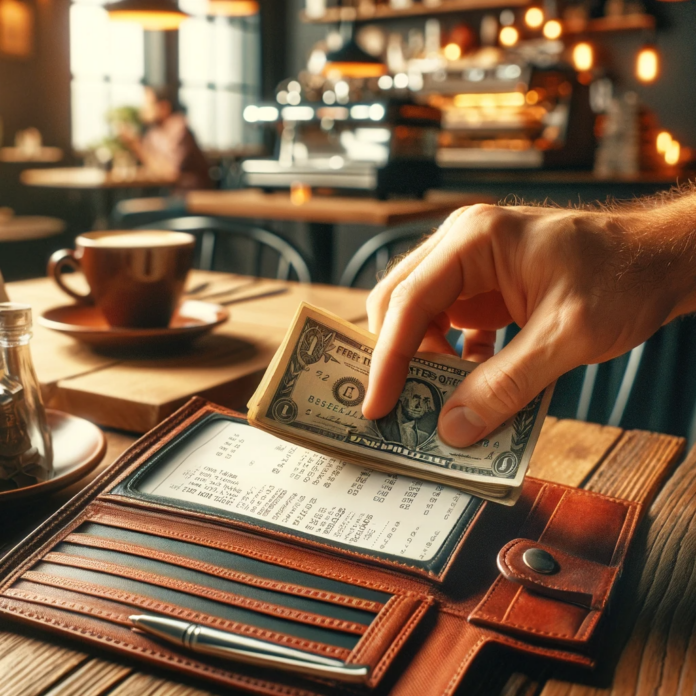Have you ever been confused about tipping etiquette today? How and when did this practice originate?
There are two theories regarding how the practice began and became common practice. One is that the practice started in Tudor England as a means a master could reward his serf or laborer for a job well done. The other theory is that the practice began in the Roman era. But again, most sources trace tipping back to the medieval era when rich people would visit homes and tip the servants for their service.
In the United States, tipping has a controversial history. It began after the Civil War when rich Americans returning home from Europe implemented this and other European practices here. Controversy entered the picture when hospitality companies employed freed slaves and paid them low wages. They then proceeded to encourage their customers to leave tips.
The practice of tipping continues today. Let’s look at the various areas where one would leave a tip and what some common rules and misconceptions are.
Why should we tip? Today, having just come out of a global pandemic, many workers, particularly those in the service industry are just recovering from immeasurable financial distress. These workers risked their health to take on a heavier workload and less pay. Tipping helps to close their financial gaps.
Who should we tip and how much? If possible, we should tip anyone who provides a service. In most cases, the threshold is 15%. But let’s go deeper into this practice by reviewing some of the industries where it is customary to tip.
Food and Beverage Employees
Generally, the standard tip of 15% is sufficient. Here is the breakdown.
Restaurant Servers
Aim for giving a minimum of a 15% tip pre-tax; 20% if the server provided above par service and more if they served a large party of diners, gave good wine and/or food recommendations, or took special care of any young children accompanying the diners.
Food Preparers and Baristas
If you are just picking up take-out from a restaurant, then tipping is not necessary. However, a 10% tip is thought to be simply a kind gesture.
Bartenders
Common practice today is to tip a dollar or two per drink or give the typical 15% to 20% of the entire tab.
Drivers
Food and Grocery Delivery
More and more people are ordering their food and groceries online. In this case, a 15% tip is appropriate.
Rideshare Drivers
Sometimes it’s easier to get around using a rideshare app like Uber or Lyft, especially if you don’t know your way around. On this occasion, a gratuity of the typical 15% to 20% is appropriate; more if the driver was helpful with recommendations about local spots and if the driver has provided some extra touches like water bottles and/or phone chargers, even candy.
Spas, Beauty Salons and Barber Shops
Beauty Salons and Cosmetologists
If you visit a beauty salon and you are being serviced by a cosmetologist, a nail professional, an aesthetician, or an eyelash professional, plan on tipping the standard 15%.
Use the same standard tipping practice at a barber shop, but tip more if the service is exceptional.
If you are working with a hairstylist, then a 20% tip is standard. You are welcome to tip more if you would like.
Massage Therapists
Again, a 15% to 20% tip is standard. However, tipping is not necessary or required if you are at a chiropractor or physical therapist’s office.
Each scenario we have reviewed so far can be handled on a credit card as you pay for your services. But what happens in cases where you are not able to use a credit card, or it is not feasible to use one?
Let’s examine some of those scenarios.
Travel Assistants
Skycaps, Bellhops, and Door Attendants
You’re traveling and know you will need help carrying your luggage either at the airport or at your destination. You must have cash handy, preferably small bills before you embark on your trip.
It is customary to give your skycap at the airport $2 for the first bag they handle and $1 for each additional bag.
At the hotel, give your bellhop $2 per bag handled.
If a door attendant assists you with your bags, offer them $1 to $4 as a tip. If a door attendant hails a cab for you, then give them $1 to $2 for their assistance.
Hotel Housekeepers
Your housekeeper is responsible for making sure your stay is not only pleasant but clean as well. It is customary to give a gratuity of between $4 and $5 per night. However, if you feel the service is exceptional, more is always appreciated.
Hotel Concierge
The hotel concierge will often assist with dinner reservations, or theatre and concert tickets. They will also help with booking you on a tour. Concierges are known for going out of their way to help make your stay unforgettable and have many contacts where you wouldn’t.
You can tip between $5 and $30 for their service per instance depending on whether they exceeded your expectations. Sometimes people will tip a concierge higher at the end of their stay, but it is not considered to be good etiquette.
Resorts
If you’re at a resort, ask your server. The general policy is that the gratuity is included in your bill. But if it is not, tip your server between 15% and 20%.
Life is hard and the cost of living continues to rise. While you are away, whether it be business or pleasure, think of all the people who helped make your trip that much more enjoyable.
Yes, it is customary to tip a service provider 15% but if you can give more, consider doing so. You never know how much that service person is in need and counting on their tips to survive because their wages are low.
When you are paying it forward, the rewards are endless.


